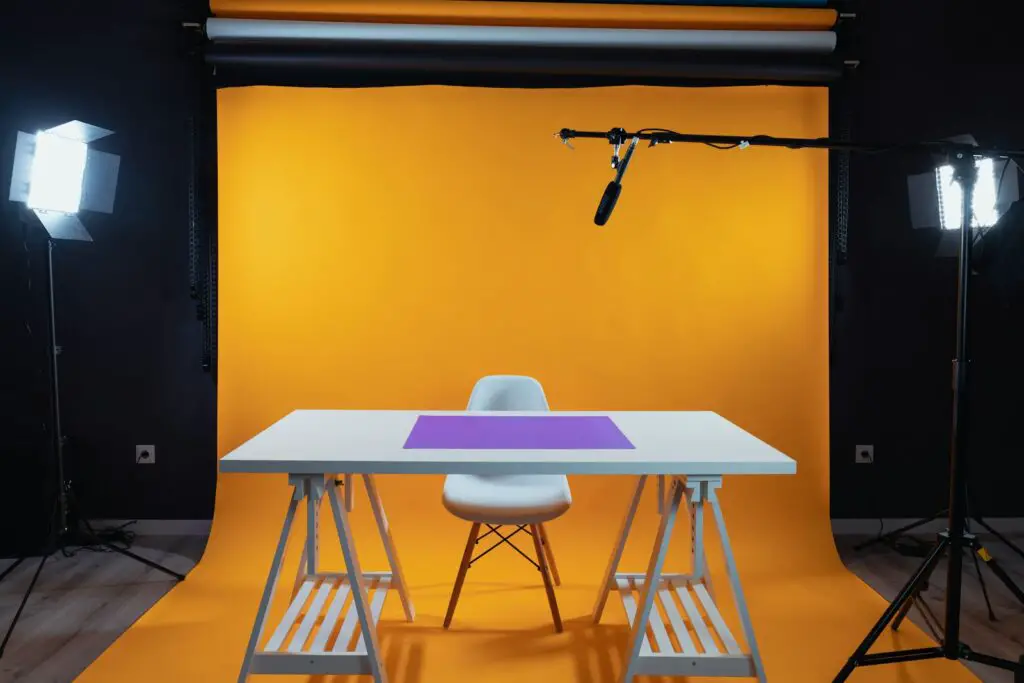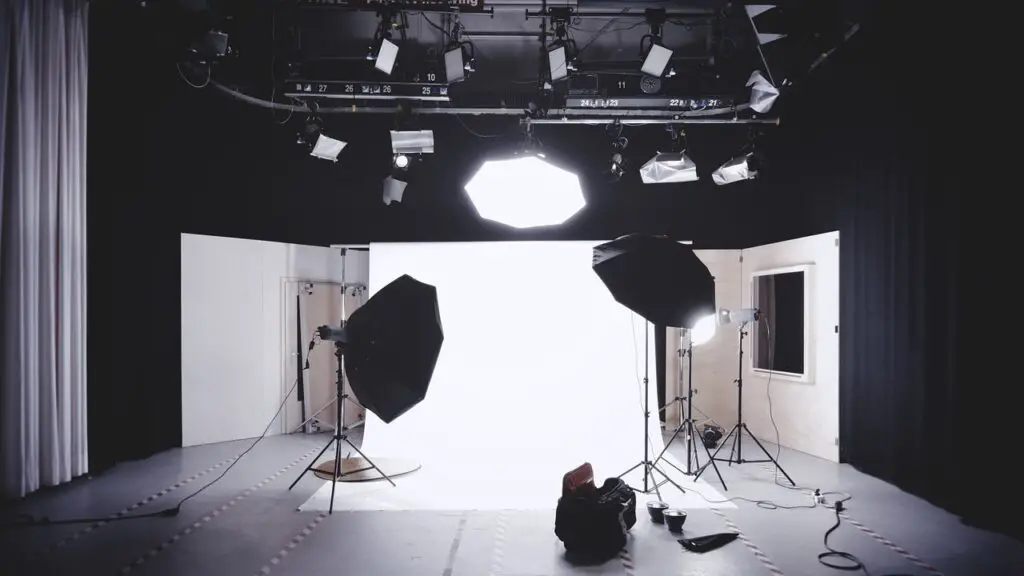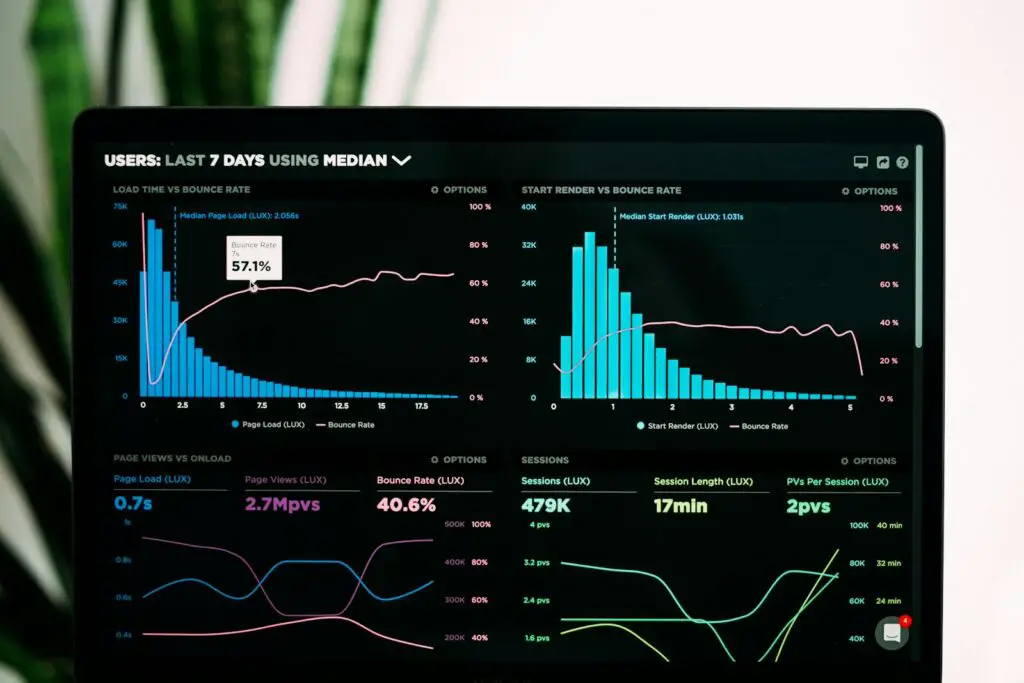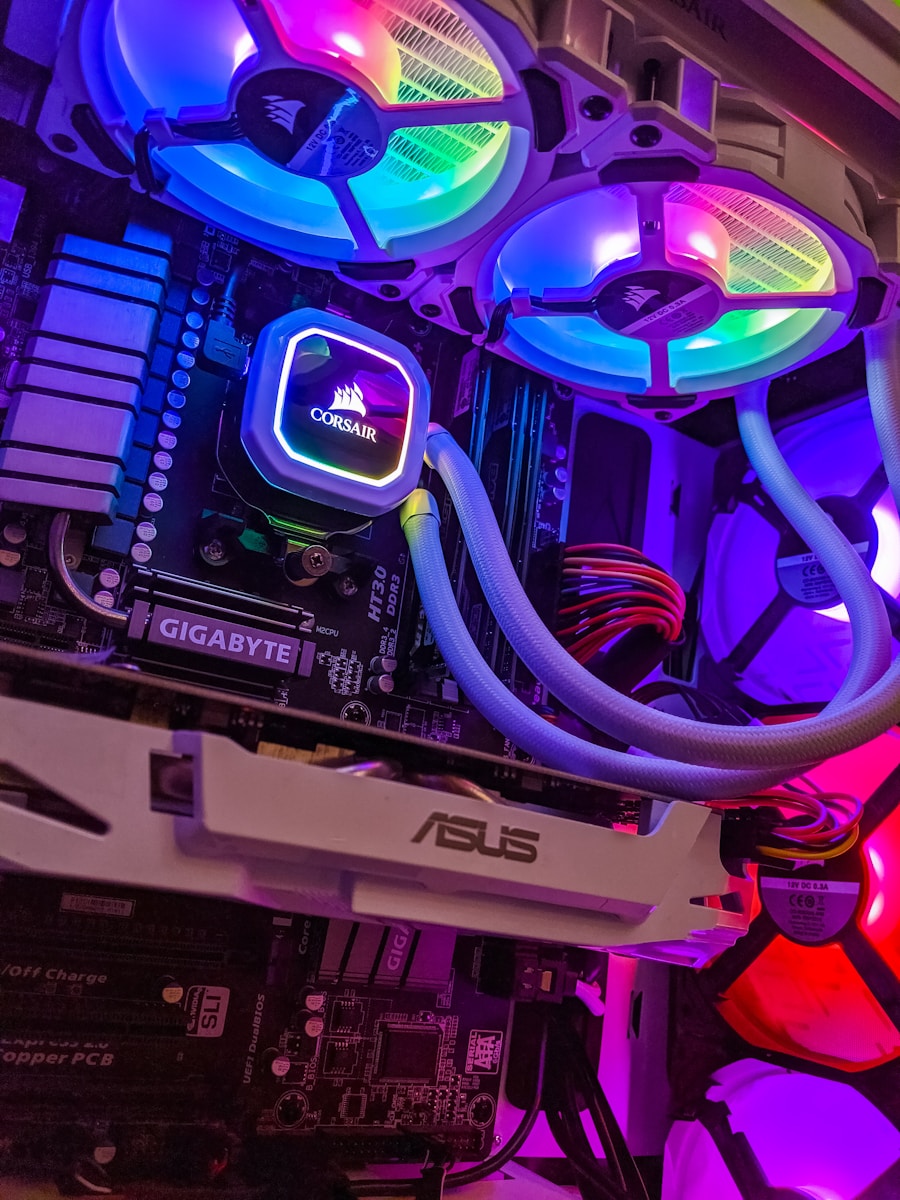In the race to capture attention, many businesses assume that investing in a content studio is the golden ticket to success.
They purchase high-end cameras, build in-house production teams, and even outsource to agencies—only to find themselves with a costly operation that isn’t driving ROI. The problem? Without a strong content strategy, even the best-equipped studio can become a financial sinkhole.
Two high-profile failures illustrate this reality. Even with significant investment, they collapsed due to a lack of research-backed strategy.
Case Study #1: Microsoft’s Mixed Reality Capture Studios – A High-Tech Miscalculation
Microsoft’s Story Labs 360, part of its Mixed Reality Capture Studios, aimed to revolutionize volumetric video production for AR and VR. It had everything—state-of-the-art technology, world-class studios, and corporate backing. Yet, in early 2023, Microsoft shut it down. Why?
- Limited Market Demand – Volumetric capture remained a niche technology, with no clear mainstream adoption (Mixed-News, 2023).
- High Production Costs – Running a studio required expensive equipment, specialized expertise, and intensive post-production (UploadVR, 2023).
- Shifting Business Priorities – Microsoft realized the venture lacked a scalable business model and pulled the plug. It layed off its entire Mixed Reality Studios capture team (Lowpass, 2023).
Even one of the biggest tech companies in the world couldn’t sustain a content studio without a clear, scalable strategy. Microsoft’s failure highlights a crucial lesson: A content studio must have a defined purpose and business alignment—otherwise, it becomes a burden rather than an asset.
Case Study #2: Disrupt Radio – A Startup That Built Before It Planned
On the other end of the spectrum, Disrupt Radio set out to be the voice of Australia’s entrepreneurial scene. It launched in June 2023, boasting high-profile hosts and a bold vision for audio content. But by early 2024, it faced financial turmoil, unpaid staff, and removal from the DAB+ signal (The Australian, 2024). What went wrong?
- No Clear Audience Strategy – Without a strong content roadmap, the station struggled to attract and retain listeners.
- Financial Instability – A lack of sustainable monetization made the company vulnerable when an investment deal failed.
- Execution Without Direction – The team built the platform before securing an engaged audience, leading to rapid financial burnout.
Much like Microsoft’s studio, Disrupt Radio had the infrastructure—but not the demand to support it.
The Missing Link: A Strong Content Strategy
These failures expose a crucial truth: A content studio is a tool, not a solution. Content production alone doesn’t drive business results—strategic content does.
According to MarcomCentral, fragmented content strategies can reduce a brand’s ability to drive revenue by 11%. Meanwhile, 50% of consumers abandon potential purchases simply because they can’t find enough product information (Syndigo). And here’s the kicker—brands that implement a consistent, structured content strategy see, on average, a 33% increase in revenue (Funnel Amplified).
A content studio should be the execution engine of a well-defined strategy, not a scattered attempt to “make more content.” Without a roadmap, brands risk creating content for the sake of it—a costly, ineffective approach.
So why do so many businesses still struggle—even after investing in a content studio?
Let’s break down the common pitfalls and what it actually takes to make a content studio work for your business.
Table of Contents
The Cost of an Inconsistent Content Strategy

Many businesses treat content creation as an on-the-fly process—reacting to trends, scrambling for ideas at the last minute, or posting only when inspiration strikes. This leads to inconsistency, wasted resources, and lost revenue opportunities.
Without a structured content strategy, here’s what’s at stake:
Missed Brand Awareness Opportunities
Your competitors are showing up daily with fresh, high-quality content. If your brand isn’t consistently visible, your audience forgets about you—and you lose market share. According to HubSpot, businesses that publish content regularly see 55% more website visitors and 126% more leads than those that post sporadically.
Lower Engagement and Trust
Consumers trust brands that consistently provide value. Sporadic posting leads to fewer touchpoints, lower engagement, and weaker brand awareness. A report by Edelman found that 81% of consumers need to trust a brand before making a purchase—trust that builds over time through consistent, valuable content.
Increased Dependency on Last-Minute, High-Cost Content Creation
Without a structured plan, content production becomes reactive rather than strategic. Every request feels urgent, leading to rushed projects, higher costs, and ineffective marketing campaigns. According to the Content Marketing Institute, brands with a documented content strategy are 60% more likely to be successful than those that create content on an ad-hoc basis.
Lack of Business Alignment
Content that isn’t strategically planned often fails to support business objectives. Whether it’s SEO, lead generation, or brand storytelling, an unstructured approach leads to content that doesn’t convert—turning what should be an investment into a wasted expense (although, it’s worth noting that creating content can still be a fun experience. However, fun doesn’t always equate to results).
Why a Content Studio Alone Won’t Fix This Problem
A content studio doesn’t solve these challenges—it amplifies them.
If your business lacks a clear strategy, investing in a content studio only accelerates content chaos (because now there’s pressure).
When businesses create content without direction, they produce beautiful but ineffective videos, blogs, and social media posts—content that looks great but doesn’t deliver results. This is why companies like Microsoft and Disrupt Radio failed: they built the infrastructure before defining who they were serving and for what they needed…
- Why would someone pay more to rent a mixed reality studio? Will it actually boost conversions?
- Why a radio station and not a podcast, do people even listen to the radio anymore?
A content studio should be the execution arm of a strategy-first approach. This means:
- Having a clear roadmap that aligns content with business goals.
- Planning and scheduling content in advance instead of scrambling last minute.
- Tracking performance metrics to optimize content over time.
- Ensuring content resonates with the right audience rather than just filling a content calendar.
If your brand is struggling with inconsistency, the problem isn’t that you don’t have a content studio—it’s that you don’t have a strategy.
In the next section, we’ll break down how to build a content strategy that actually works—so your content studio becomes an asset, not a liability.
How a Strategy-Driven Content Studio Can Transform Your Brand

A content studio doesn’t fix content problems on its own—it magnifies the effectiveness of a strong strategy backed by research and data.
When built correctly, a content studio becomes an asset rather than an overhead expense. Here’s what separates a content studio that thrives from one that drains resources:
1. It Builds a Funnel, Not Just Content
Content is only as powerful as the sales funnel it feeds into. Each video, article, or social post should serve a purpose within a broader system designed to attract, nurture, and convert leads. Successful brands don’t create content for engagement alone—they create it as part of a structured funnel that turns audience attention into measurable business results.
2. It Aligns Content With Business Goals
Every video, blog post, or podcast should be purpose-driven. A strategic content studio ensures that everything produced aligns with:
- SEO strategies for organic visibility.
- Sales funnels to guide customers toward conversion.
- Brand positioning to establish authority and credibility.
3. It Reduces Waste and Maximizes ROI
Instead of spending money on one-off content pieces that don’t contribute to a larger vision, a strategy-driven content studio optimizes resources. This means:
- Repurposing and reshaping content across multiple channels.
- Tracking performance metrics to refine future content.
- Eliminating unnecessary production costs by focusing on what works.
Why a Content Studio is a Game Changer (Once the Strategy is in Place)

When backed by solid research, a content studio transforms from a costly liability into a powerful asset. Here’s how:
Enhanced Brand Consistency
A dedicated content creation process ensures uniformity in messaging across all platforms, crucial for brand recognition and trust. Studies show that maintaining consistent branding can lead to a revenue increase of up to 23% (Astute Review).
Improved Efficiency and Cost-Effectiveness
By systemizing content production, businesses reduce reliance on last-minute, high-cost content creation. Content marketing costs 62% less than traditional marketing methods while generating three times as many leads (Founders Tech).
Long-Term Content Planning & Scalability
A content studio allows brands to batch-produce content, repurpose it across multiple platforms, and schedule it strategically. This ensures that marketing efforts are aligned with business goals and ready for long-term deployment, rather than being reactive.
A Culture of Creativity and Innovation
An in-house content studio fosters a culture of experimentation and strategic storytelling. Teams can test new formats, messaging angles, and campaign ideas in a controlled environment—leading to more innovative content and better engagement.
A content studio is a force multiplier, but only when driven by a clear, strategy-first approach. In the next section, we’ll break down how to structure a content strategy that ensures your studio delivers measurable business results.
Real-World Success: How Top Brands Leverage Content Studios
Not convinced? Let’s look at real businesses that have transformed their marketing with a content studio. Whether they built an in-house setup or partnered with professionals, these brands prove that a structured content system isn’t just a luxury—it’s a growth multiplier.
1. Gymshark’s In-House Studio – Dominating Social Media with Agile Content
Gymshark, a rapidly growing fitness apparel brand, once relied heavily on influencer content and third-party agencies. But as they scaled, they realized they needed greater control, faster turnaround times, and a unique brand voice.
The Challenge: Relying on influencers and agencies made content expensive and slow to produce.
The Solution: Gymshark built an in-house content studio, hiring videographers, editors, and set designers.
The Results:
- Their in-house team now produces high-quality content daily for TikTok, Instagram, and YouTube.
- They generate millions of organic views, fueling their growth to a $500M+ brand.
- Their agility allows them to quickly jump on trends and outpace competitors.
Takeaway: A well-structured content studio allows brands to create consistent, high-volume content without relying on slow, external agencies.
2. Red Bull Media House – Turning a Brand into a Content Powerhouse
Red Bull is no longer just an energy drink company—it’s a media empire. Their investment in content production has made them a dominant force in action sports, live events, and viral videos.
The Challenge: Moving beyond traditional advertising to create an entertainment-driven brand.
The Solution: They built an entire media house, producing high-end action sports content, documentaries, and branded events.
The Results:
- Red Bull’s video production rivals mainstream broadcasters, drawing millions of views.
- They dominate extreme sports marketing without relying on traditional ads.
- Their branded content generates global reach, positioning them as an industry leader beyond energy drinks.
Takeaway: A full-scale content studio can transform a brand into a media powerhouse, making it a go-to authority in its niche.
3. Seth Godin – The Power of a Studio-Free Content Strategy
Seth Godin doesn’t have a content studio. No high-end cameras, no elaborate production teams—just a simple blog. And yet, he has built one of the most influential personal brands in the world.
The Challenge: How do you create content that drives massive engagement, authority, and revenue—without relying on a studio?
The Solution: Seth Godin writes a daily blog. No fancy formatting. No images. Just short, insightful posts that provide value to his audience.
The Results:
- His blog attracts millions of readers, shaping the marketing industry for decades.
- He has published multiple bestsellers, including Purple Cow and This Is Marketing.
- He has built a loyal following that fuels book sales, speaking engagements, and business opportunities—all without video, podcasts, or production-heavy content.
Takeaway: Seth Godin proves that strategy beats production value. His success isn’t about high-end visuals—it’s about clarity, consistency, and delivering real value. If your strategy is strong, you don’t need a studio. If it’s weak, no amount of production will save you.
So, do you even need a content studio?
Let’s break down how brands are leveraging content studios the right way—and what separates a content powerhouse from an expensive hobby.
Bottom Line: The businesses winning in 2025 aren’t just making content—they’re systemizing it. Whether you start small or go big, investing in a content studio gives your brand a competitive edge in an oversaturated digital landscape.
The Right Content Studio for Your Business: Scaling Smartly
Many businesses assume that a content studio needs to be packed with high-end gear, but that’s exactly where Microsoft went wrong.
Too much technology, not enough intent.
The reality? The best content studios prioritize ease of use, efficiency, and strategic design—not excessive equipment.
Level 1: The Intentional Content Studio (Start Here)

A foundational content studio isn’t about high-end tech—it’s about effortless, repeatable content production. This setup is perfect for brands focused on quick, professional, and scalable content creation without unnecessary complexity.
What matters most:
- Set Design First – Your set is your brand’s visual identity. A well-designed backdrop is more powerful than the latest camera model.
- Lighting for Consistency – Soft, even lighting matters more than a high-resolution camera.
- Minimal Equipment, Maximum Impact – A smartphone with a tripod and quality microphone is all most businesses need.
Level 2: The Scalable Content Hub

For businesses ready to take more control over content production, adding structure and higher production value makes sense. However, the focus should still be on ease of use and efficiency.
Smart upgrades:
- Multi-Purpose Setups – Spaces that easily transition between different types of content (e.g., interviews, product demos, livestreams).
- Flexible Lighting Solutions – Adjustable LED panels to control ambiance and highlight branding.
- Dedicated Audio Setup – Lavalier mics or directional microphones for crisp, professional sound.
Level 3: The Fully Integrated Content Studio

This is for brands that rely heavily on content as a primary growth driver. But even here, usability and workflow come first.
High-impact features:
- Branded Set Design – A visually unique, instantly recognizable space that reinforces brand identity.
- Plug-and-Play Workflow – Everything should be pre-configured to start shooting instantly, reducing downtime.
- Advanced Content Repurposing – High-quality multi-camera setups for dynamic filming, maximizing every recording session’s potential.
Why an Easy-to-Use Studio Beats a Tech-Heavy One
The biggest mistake businesses make is overcomplicating their studio. A simple, well-thought-out space that anyone on your team can use is 100x more valuable than an expensive setup that collects dust.
- A strong set design builds brand recognition.
- An effortless workflow makes content creation repeatable.
- A well-optimized space reduces friction and maximizes productivity.
A great studio isn’t about the gear—it’s about the execution.
Microsoft’s failure proves that technology without strategy leads to wasted resources. Instead of chasing complexity, focus on scalability, ease of use, and content that aligns with business objectives.
7 Benefits of a Successful Content Studio

Investing in a content studio—whether in-house or through a creative agency—offers significant advantages that can transform your business’s marketing efforts. Here’s how:
1. Accelerated Content Production
With a dedicated content studio, you can batch-produce multiple pieces in a single session, drastically reducing production time. This agility allows your brand to stay relevant and responsive to market trends.
2. Substantial Cost Savings
Traditional advertising methods can be costly and often yield lower returns. In contrast, content marketing costs 62% less and generates approximately three times more leads per dollar spent. (interodigital.com)
3. Enhanced Brand Consistency and Control
A structured workflow ensures that your content remains visually and tonally consistent across all marketing channels. This consistency builds trust and credibility with your audience, leading to increased customer loyalty. (coastcreative.com.au)
4. Higher ROI on Marketing Efforts
High-quality, frequent content leads to better engagement, stronger brand authority, and increased revenue. On average, businesses see a yearly ROI of $984,000 from well-executed content marketing campaigns. (firstpagesage.com)
5. Building Long-Term Brand Loyalty
Consistent content creation helps in building long-term brand loyalty by keeping your audience engaged and informed. This ongoing engagement fosters a deeper connection between your brand and its audience. (contentoo.com)
6. Improved SEO and Organic Reach
Regularly publishing valuable content improves your website’s SEO, making it easier for potential customers to find you organically. This increased visibility leads to more traffic and potential sales. (aicontentfy.com)
7. Establishing Thought Leadership
By consistently sharing insightful and relevant content, your brand can position itself as a thought leader in your industry, further enhancing credibility and attracting a loyal audience. (thecreativesdesk.com)
In today’s competitive landscape, the urgency to adopt a content studio model cannot be overstated. Brands that fail to produce consistent, high-quality content risk falling behind competitors who are actively engaging their audiences. By investing in a content studio, you’re not just keeping up—you’re setting the pace.
Remember, a content studio isn’t just an expense—it’s a strategic investment in your brand’s long-term growth and success.
Pro Tip: Start by assessing your current content needs and resources. Even a modest investment in a basic content studio can yield significant returns. As your content demands grow, you can scale your studio’s capabilities accordingly.
Want the Benefits Without the Overhead?
Building a content studio from scratch isn’t the right move for every business. If you want all the benefits without the overhead, Decibel Peak helps small-medium businesses execute at peak level—without locking them into an inflexible structure.
At Decibel Peak, we don’t claim to have it all—we work with the best creatives in the industry to build customized strategies that get results. The real value isn’t just in producing content—it’s in executing a data-backed, strategic approach that ensures every piece of content serves a clear business purpose.
Why Work With Decibel Peak?
Strategy-First Execution – Before producing anything, we align your content with your business goals, ensuring that every video, podcast, and blog post is a strategic asset—not just content for content’s sake.
Instant Access to an Elite Creative Network – Instead of hiring an in-house team or committing to a rigid agency model, you gain access to the best creatives in video production, audio branding, web design, and copywriting—only when you need them.
Effortless Content Systems – No need to invest in expensive gear or spend hours managing production logistics. We build systems that streamline content creation, so your brand stays consistent and efficient.
Flexible Collaboration – Whether you need full-scale content production, studio consulting, or strategic guidance, we adapt to your needs, your goals, and your resources.
Next Steps: Get a Free Content Strategy Report
If you’re serious about leveraging content to grow your business but aren’t sure where to start, fill out this form to get your free customized content strategy report.
Or, you can book a consultation today to discuss how we can help you build or optimize a content studio that works for your brand.
At the end of the day, content isn’t about just making noise—it’s about making an impact. Work with a team that understands how to turn strategy into results.
The Content Studio Myth—Strategy Comes First
A content studio is a powerful tool, but it’s not a magic bullet.
The failures of Microsoft’s Mixed Reality Capture Studios and Disrupt Radio prove that high-end production alone doesn’t guarantee success. Meanwhile, Seth Godin’s blog shows that strategy alone can build an empire—without a single camera.
The real difference? Intentional execution.
A content studio amplifies what already exists. If your strategy is clear, a well-structured content studio will multiply your reach, efficiency, and ROI. But if you’re producing content without direction, a studio will only accelerate the chaos.
Before investing in content, ask yourself:
- Do we know exactly who we’re talking to?
- Does we know what our audience’s pain points are?
- Do we actually have solutions for our audience that allign with our vision?
If the answer is no, a studio won’t fix the problem—it’ll make it worse.
But if you’ve done your market research, a content studio becomes a game-changer—helping you scale content, dominate your niche, and turn attention into revenue. Want to build a content studio that actually works? Let’s talk.




